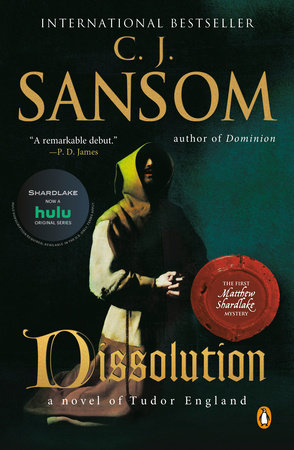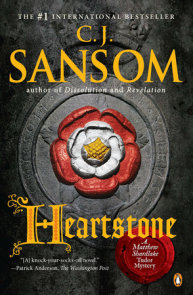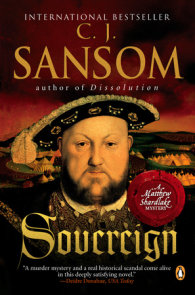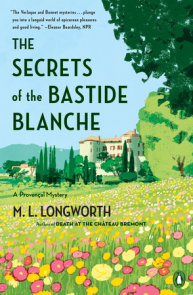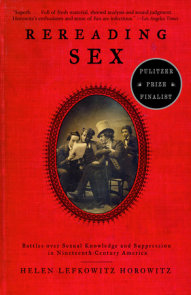READERS GUIDE
Questions and Topics for Discussion
INTRODUCTION
“We had once believed with Erasmus that faith and charity would be enough to settle religious differences between men.” —Matthew Shardlake
England, 1537. The Reformation has become a reign of terror and Catholics must denounce the pope or face the rack in the Tower of London. Henry VIII and Thomas Cromwell are dissolving the network of monasteries that, in many cases, were guilty of much wrongdoing. When a commissioner sent to investigate the St. Donatus Monastery is murdered—”his head cut clean off” in the building’s kitchen—Cromwell calls upon Matthew Shardlake, a remarkably astute hunchback, to solve the crime. Along with his young apprentice Mark Poer, Shardlake accepts the mission. In bitter cold, they set out on horseback to the ancient stone building with fear in their hearts. Would they be living among a cloistered madman? Was this a ritual killing? If not, why was the church altar desecrated with a dead cock? Or had that been a diversion to confuse the investigators? Had the commissioner discovered a secret that cost him his life? Should Shardlake and Mark uncover a similar secret, will they be the next victims?
Upon arriving at the monastery, Shardlake and Mark meet a host of peculiar men, each one presenting unique challenges to the seemingly impossible task of finding Commissioner Singleton’s murderer. Brother Guy, the infirmarian, is austere yet warm. Despite the brother’s refusal to renounce the pope, Shardlake is drawn to his healing abilities and earnest personality. The stuttering Brother Edwig manages the monastery finances. He’s tight with St. Donatus’ money and keeps records of land purchases under lock and key. Shardlake finds Prior Mortimus, the disciplinarian, to be a despicable individual who embodies the hypocritical nature of the Catholic Church. Far from being in control of his immoral urges, Mortimus’ brutal punishments often land other brothers in the infirmary—or in a coffin. Brother Gabriel, who is responsible for the music and aesthetics of the church, is morally upright—unless in the company of attractive young men. And lurking around the property on crutches is an emaciated, insane Carthusian monk, his body and spirit broken by a harrowing period spent in London’s infamous Tower. In addition to these, the feeble Abbot Fabian, and various aging monks, there is Alice. The only woman living on the premises, she works alongside Brother Guy in the infirmary. Intelligent, willful, and beautiful, Shardlake and Poer both take her not just into their confidence but also into their hearts. Shardlake, however, is no ordinary man—he is a hunchback. Painfully aware of his physical deformity, he watches helplessly as Alice’s relationship with Poer deepens into a romantic affair.
The secret passages that Shardlake and Poer discover behind the walls of the monastery serve as an apt metaphor for the mysteries the two must solve—and are a potent reminder that nothing is as it appears. The brothers are dropping like flies, and Shardlake is painfully aware that his life may be next. When the deranged Carthusian mockingly reveals the identity of the famous prisoner kept in the cell next to his in the Tower of London, Shardlake must confront a degree of moral decrepitude that challenges his faith in the church, his country, and even his own instincts. Are the three people Shardlake trusts most—Alice, Mark, and Brother Guy—his biggest danger? Forging ahead to resolve the bloody mess at St. Donatus, he knows the consequences of his investigation go beyond the dissolution of the monastery. When Shardlake returns to London, he is a disillusioned man who “in [his] willful blindness has refused to see what was before [his] eyes.” Readers, however, are left eager for another chance to meet this exceptionally rich and challenging protagonist.
ABOUT C.J. SANSOM
C. J. Sansom earned a Ph.D. in history and, before becoming a full-time writer, was a lawyer. Dissolution is his first novel. He lives in Sussex, England, where he is working on further Matthew Shardlake mysteries.
A CONVERSATION WITH C.J. SANSOM
What inspired the creation of Matthew Shardlake? Why did you afflict him with this particular physical deformity?
I wanted to write a novel about the dissolution of the monasteries, a very dramatic episode in English history whose dramatic potential I thought had never been fully exposed—perhaps because of the complexities of theology and politics that were involved. To interpret the time to modern readers, I needed a protagonist who was “apart” from his time—through intellectual rigor and honesty, but also in more subtle ways. Or at least I think that was what was going on in my subconscious, because Shardlake and Mark riding through bad weather together was a picture that appeared in my head fully formed one day. I don’t know why I gave him the hunchback, perhaps it symbolizes the weight he carries as a person of integrity in that grim time.
Considering the large, if confined, cast of characters and the intricate plot twists, how did you keep the narrative on course? Discuss your method of writing such a novel. Did you have an outline? Were you aware of the outcome from the beginning?
I believe very strongly in writing to a tight structure, especially in a thriller—though I know not all thriller writers do that. My background as a lawyer has something to do with my schematic approach, I’m sure. I wrote Chapter One, then did an overall “structure plan” that changed and developed as I went on, reviewing what is revealed to whom at what stage. But I don’t put the novel in a straitjacket—characters have to have room to develop. For example, I originally intended the abbot to be the murderer, then realized he wouldn’t have had the stomach for murder, but the bursar would. But I had the idea of a female killer, and the notion that Mark would betray Shardlake, from the start.
How did you make the transition from lawyer to writer? Do the two careers require types of logical thinking that compliment each other?
I had always wanted to write novels, but not coming from a wealthy background I needed to work for a living and had little energy to write at the end of a busy day—a common story I know! In 2000 I decided to take a year off and have a real go at writing a novel, and the rest is history, or at least historical novels. As I said above, I think the habit of organizing large bodies of complex material, always with presentation as a factor, which I had for years as a solicitor working in civil litigation, has influenced my way of working. And my first incarnation, as a history student at university helped with the research!
Why did you choose to write about this particular time in England? Do you think it is the most important era of English history, a time that lends itself particularly well to drama, or a combination of these things?
I think the sixteenth century is a fascinating period in British and European history—the intellectual framework of medieval Europe was torn apart and the modern world began. I wouldn’t say it was the “most important” period of English history—the Industrial Revolution shaped modern life far more. And I am interested in other periods, having just finished a novel set around the Spanish Civil War.
Did you, at any point, envision Shardlake and Alice becoming romantically involved? Why or why not?
No. I didn’t think someone as young and emotional as Alice could ever be interested in Shardlake, and I see him as the sort of detective, like Inspector Morse, who doesn’t have a lot of success with the ladies—I don’t mean because of his hump, which would not have been that uncommon in England then—more his lack of self-esteem. But he does have a serious, reciprocated romantic interest in the sequel, though I won’t say whether or not it ends happily . . .
What aspect of Shardlake’s personality do you empathize with the most? Do you imbue your characters with parts of yourself? If so, is this a phenomenon that, as a writer, you don’t notice till the novel is completed?
I think most major characters are either parts of oneself or parts of people that have made an impact on you, for good or ill. Beyond that, I don’t know, because I find that mostly my major characters are formed subconsciously, and often take on a life of their own on the page and move away from what was planned—like the abbot, mentioned above.
Which part of Dissolution was the most time consuming: the writing or the research?
The research took about two to three months—I was lucky because I knew the period well and needed only to research the dissolution. Writing was odd—the first half took six months. Then, after a crisis of confidence, I decided to just bash on and finish and I did the second half in six weeks. I don’t think it suffered, which is odd. The revision is what takes a lot of time and is the least enjoyable part, but it has to be done and knocked into the best shape possible for the readers!
Other than Matthew Shardlake, Brother Guy stood out as an individual with a fascinating past. Is it possible that he will reappear in another novel?
It is. He does. He is the only character from Dissolution, apart from Shardlake and Cromwell, to appear in the sequel, Dark Fire.
From which authors have you learned the most about writing?
I have always had very catholic tastes. John le Carré, P. D. James, Ruth Rendell, and John Steinbeck spring to mind.
Do you have further plans for Shardlake? If so, what are they?
The sequel, Dark Fire, finds him once again reluctantly involved in a mission for Cromwell. It is set entirely in London, in 1540, three years later. I will shortly be starting research for a third Shardlake novel, set during Henry VIII’s royal progress to York in 1541.
DISCUSSION QUESTIONS







